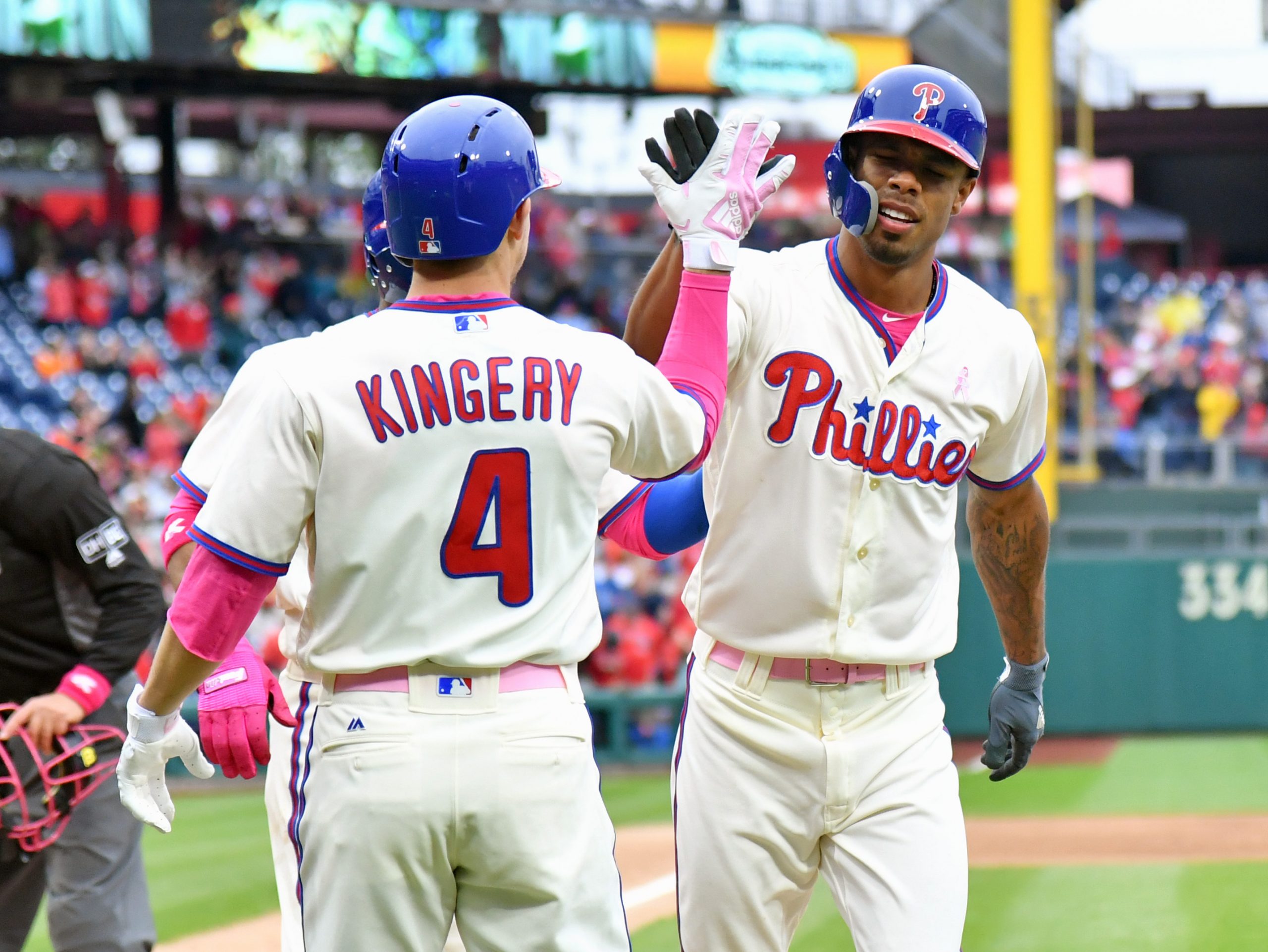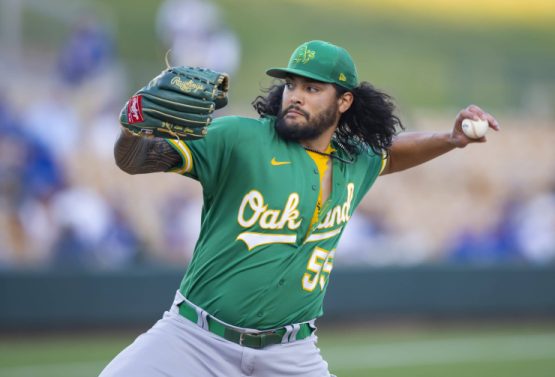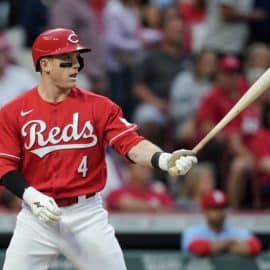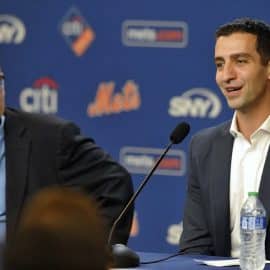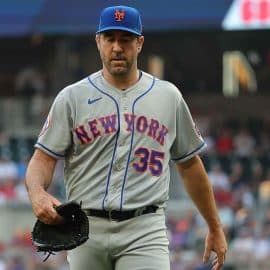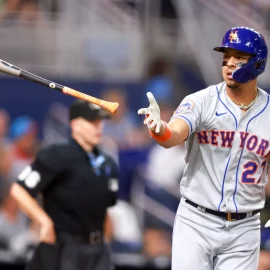Mother’s Day was weird. The Mets were already coming off a rainout on Saturday, then Sunday was delayed by about an hour, and Jacob deGrom was coming back off of a hyperextended elbow. deGrom’s first inning enhanced the weirdness pattern, throwing 45 pitches and yet giving up zero runs. On the fly, Mickey Callaway decided to pull deGrom and make it a bullpen game after the first inning. Smart, considering the day continued to be cold and damp. I wouldn’t have taken any chances either. With the off days coming up, deGrom can come back on normal rest.
So Callaway makes this a bullpen game and Paul Sewald is finishing up his second inning after Robert Gsellman handled innings 2-4. Nick Williams was up with two outs and two runners on with the Mets up 1-0. Callaway had Jerry Blevins warm in the bullpen and on the surface, would have seemed to be the easy play to bring in and face the lefty hitting Williams. Instead, it was the righty Sewald who faced him and gave up a three run HR. It was the key damage in a game that ended in a 4-2 Mets loss.
Now, if you think the same blogger who constantly complained about Terry Collins continuously using Hansel Robles in traditional split situations is going to turn around and complain that he didn’t go to the traditional split option in Blevins instead of Sewald, then I find your lack of faith disturbing. I liked the move, and I still like the move. But I came about my opinion in a different way. Because the first thing I thought of was: “Man, Williams put a ‘launch angle’ swing on that ball”. And I wondered not whether it would have been a better idea to bring in a lefty instead of a righty, but whether it would have been a better idea to bring in a curve ball pitcher instead of a slider pitcher in this era of launch angle swings.
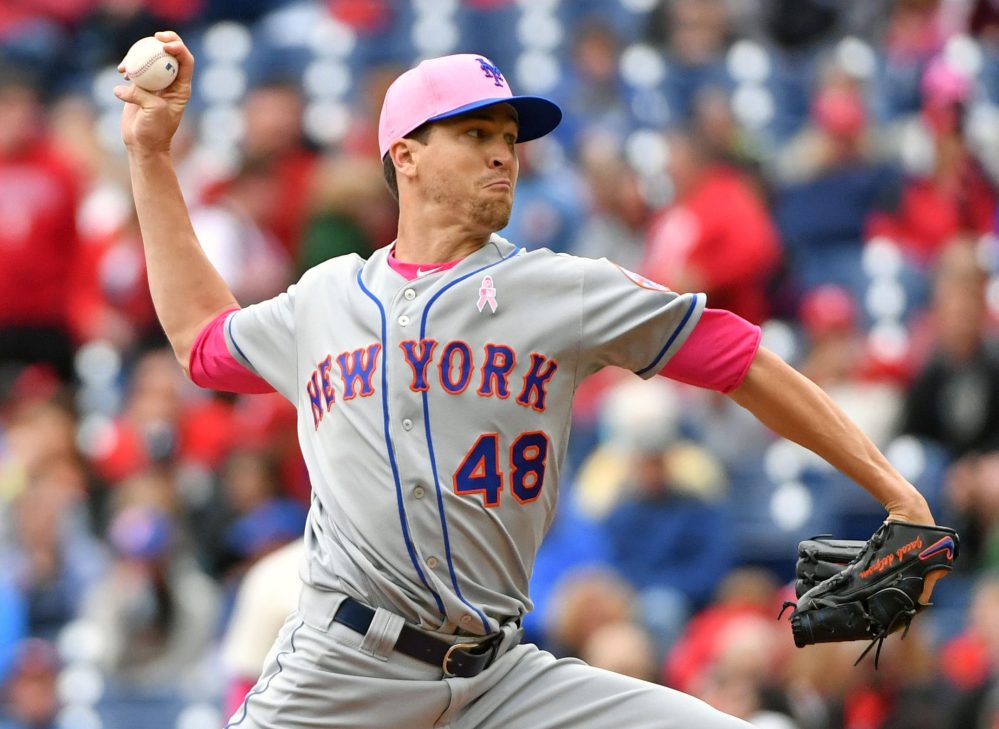
First let’s look at the regular splits:
- Sewald, for this season, is a good crossover guy whose numbers are better against lefties (.220/.238/.341) than righties (.231/.262/.385), but he’s had success against both sides.
- Blevins, a very good lefty specialist and a good crossover guy for one season, has struggled against lefties for whatever reason this season, going .273/.333/.364 this season. Key here is that this season has weight in this situation because that’s what Mickey Callaway has seen. I’m sure he knows how good Blevins has been in the past, but he sees a struggling pitcher and thought Sewald was the better matchup (and maybe he was saving Blevins for a later inning spot.) I say all this not knowing what Callaway said in the post game interview, but I’m going to defend his decision anyway.
- For his part, Nick Williams has had comparable numbers against lefties (.286/.340/.407) versus against righties (271/.328/.450).
Any way you slice it, the decision to leave Sewald in was defensible. But going back to my original thought: Why wouldn’t you bring in a lefty curveball pitcher instead of a righty slider guy? Well I’m not sure Callaway keeps these numbers in a book at his fingertips, but this proves Callaway correct as well.
- Nick Williams against the curveball: .241 career, and .375 (3 for 8) this season.
- Nick Williams against the slider: .195 career, and 0-for-9 this season.
The numbers all worked for Callaway and Sewald. But Sewald threw a hanger and the Mets lost a ballgame. Sometimes, a pitcher just throws a bad pitch. It happens, and it’s okay to blame the pitch instead of blaming the manager all the time. I’m not sure the level of thought that Callaway put into this, or which of the above numbers he was aware of, but any portion of the numbers that he used is at least using more nuanced thought than “Robles is a righty, he should face righties.”
Unfortunately, sometimes thoughtful process bears bad results. At 19-18, this team can’t afford a lot of bad results.
Today’s Hate List
- Nick Williams
- Edubray Ramos
- Shane Victorino
- Jorge Alfano
- Aaron Nola
Add The Sports Daily to your Google News Feed!
